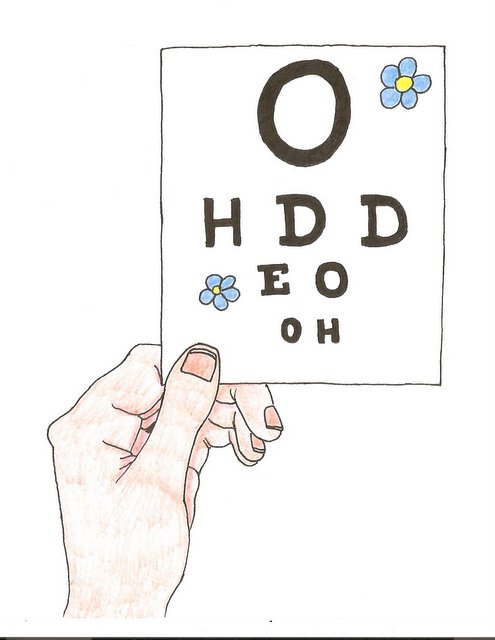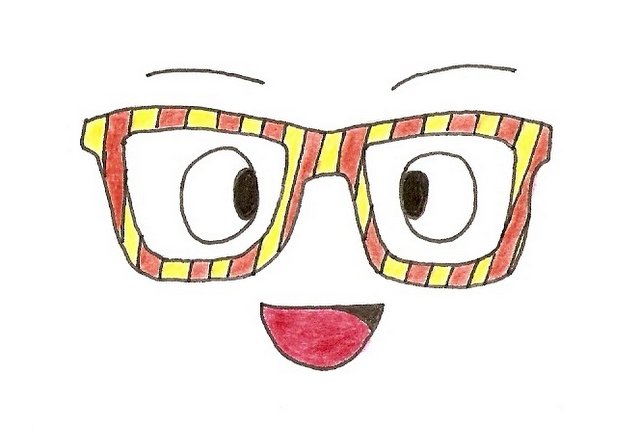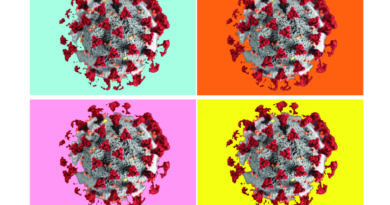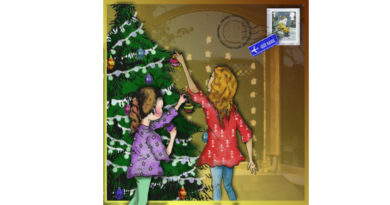Vision Testing of Children in Switzerland
 People used to think that babies were born blind, just like puppies or kittens! Although newborn babies cannot see clearly, they start to look around right from the beginning, though their ability to focus is limited. Babies may even stare intently for short periods of time at interesting objects. The physical, social, and emotional development of a child can be significantly impaired if the child has visual problems that are not addressed.
People used to think that babies were born blind, just like puppies or kittens! Although newborn babies cannot see clearly, they start to look around right from the beginning, though their ability to focus is limited. Babies may even stare intently for short periods of time at interesting objects. The physical, social, and emotional development of a child can be significantly impaired if the child has visual problems that are not addressed.
The Newborn Eye Check
All babies will have an eye check, usually done by a paediatrician, soon after birth. You might have noticed your newborn having her eyes checked with an ophthalmoscope. Light from the ophthalmoscope should reflect from the back of the retina, giving a red glow. This normal response is called a red reflex, and problems could indicate a cataract.
Amongst other things, the newborn eye test searches for a squint. A squint is when both eyes are not pointing in the same direction. Babies may have a mild squint after birth. Early on, this is of no concern, as these squints are usually self-correcting.
The Eyes At Six- to Eight Weeks Old
The next regular eye review usually takes place at the age of six to eight weeks. By this time, you will have noticed many changes in your baby’s vision, including the ability to fix and follow. This is when the baby sets its eyes on a face and follows it as it moves, for example the mother’s face during feeding. Or your baby may gaze at a bright toy and follow the toy as it moves.
Eye testing at this stage includes checking the red reflex again, looking for squints, and noting the eye movements. Babies may squint if they are getting tired, and their eyes straighten up again when they are alert. This type of squinting usually goes by two to three months of age. However, if there appears to be a permanent squint, this will need further investigation.
During routine baby checks, you are likely to be asked these types of questions: Does your baby focus on faces? Does your baby open his/her eyes and look at you? Does your baby keep looking at you if you move? Does one eye ever seem to be looking in the wrong direction? Is there anything about your child’s eyes that you have noticed and are unsure about?
The Preschool Years
In Switzerland, there are ample opportunities for parents and carers to express concerns about their baby’s vision. There are numerous scheduled checkups with your child’s paediatrician, as well as useful contact with other child health experts, for example at the local Mütterberatung* (or its equivalent in your part of Switzerland).
Although some scheduled baby checkups are specifically for routine vaccinations or other matters, all checkups are opportunities for monitoring general health and development. Your child’s eyes will be examined a number of times by your paediatrician. Throughout the pre-school years, your own observations and concerns about your baby’s changing visual abilities are important. You should always report any worries about vision to your child’s paediatrician.
The Pre-Kindergarten/Kindergarten Eye Screen
Following the baby checks, the next important visual screening of children in Switzerland happens at around pre-kindergarten/kindergarten age (four to five years old). This eye test may be carried out by your own paediatrician, who completes a form that is returned to the school’s health care service. In some cantons, the school doctors themselves do the eye checks, or they recommend specific doctors in your area to do it. Before the age of four to five, most significant eye problems will have already been discovered. They may have been spotted at earlier baby checks (like a squint or a cataract), or noticed by parents or carers themselves.
Children with specific medical illnesses will already be under the care of an ophthalmologist. An example might be a child with arthritis, who needs frequent regular eye checks, sometimes three to four times a year. Children with increased risk factors for eye problems will also be under the care of an ophthalmologist already. This includes children born prematurely (who are at greater risk of developing abnormal blood vessels on the back of the eye), and children who have family members with inheritable eye conditions.
So the vision-screening programme acts as a safety net, trying to pick up any visual defects that have so far been undetected.
Amblyopia (or “Lazy Eye”)
The main aim of the pre-kindergarten/kindergarten vision screening is to detect an eye condition called amblyopia. Amblyopia is sometimes called “lazy eye.” Your brain only learns to see clearly if it is given nice sharp pictures. Amblyopia happens because the brain learns to ignore the poor visuals that come via the lazy eye. The brain gets used to ignoring the lazy eye, and relies instead on visuals via the good eye. Depending on how severe it is, amblyopia may prevent your child from entering certain professions such as the fire brigade, the police force, and military services. It may also rule out certain categories of driving licence.
What Happens If Amblyopia (Lazy Eye) Is Detected in Your Child?
If the vision-screening programme detects amblyopia in a child at age four or five, it can be treated in a number of ways to help maximise vision in the affected eye. If undetected (and untreated), lazy eye can lead to permanent impairment of vision. This does not necessarily mean complete blindness, but it does mean that good vision is unlikely to ever be achieved in the affected eye.
Lazy eye needs to be detected and treated before the age of seven or eight. Even though the brain has gotten used to ignoring the lazy eye, the brain can be “retrained” to start accepting images from the lazy eye again, if treatment begins early enough.
What About Vision Testing in Older Children?
All cantons in Switzerland do further vision screening via the local school health services. Many do a test at the start of primary school (around six to seven years), and then towards the end of primary or at the beginning of secondary school (around age 11 or 12). Some cantons do a further test in the middle of the primary years. Other cantons will have their own schedules in place for older children.
Some of these vision screens are aimed at finding children with undetected myopia (short-sightedness). Colour vision testing is sometimes done at the start of secondary school, though not all vision-screening programmes consider this necessary. However, a colour vision deficiency could affect your child’s ability to follow colour coded school materials, and may affect career choice (e.g., train driver, electrician).
Community health nurses attached to schools are available to help deal with vision problems detected in primary or secondary school, and you can approach them directly for advice if you wish.
So When Exactly Should Your Child Have an Eye Test?
The answer to this question is not straightforward, because it depends on many factors. It is worth noting that the vision-screening programmes done in schools are not the same as comprehensive eye tests performed by an ophthalmologist.
Consider this:
- Children who should have comprehensive eye tests with an ophthalmologist include the following: children already diagnosed with visual problems, children who suffer from certain diseases, children at risk of developing eye problems for reasons such as prematurity, children from families where eye conditions are passed on, children with worrying symptoms, and any child whose parent, carer, or health professional has noticed that something is just not right with the child’s eyesight.
- Children who need eyeglasses at any age get eye prescriptions from an ophthalmologist, and may need eye tests every six to twelve months, depending on the ophthalmologist’s recommendations.
- Children who are otherwise healthy with no symptoms, and have been through all screening tests with no problems, and have no known reasons or risk factors for further eye testing, are unlikely to need a comprehensive eye test with an ophthalmologist.
Having read the above, have you managed to work out whether your child needs an eye test or not? It is not easy, because it’s a surprisingly controversial area with variations in opinion.
The key eye tests for children in Switzerland happen at birth, at six to eight weeks, and at four to five years. Further screening eye tests in older children take place but vary across cantons. Other eye tests are dependent on individual circumstances. Intervals between eye tests will vary according to advice from your paediatrician or ophthalmologist.
What Are Your Experiences?
Do write in with your own experiences of eye tests in your children. Are you happy with the vision-screening programme in your area? Did your child have a visual defect detected by the programme in your part of Switzerland? Are you in regular contact with an ophthalmologist for your child’s eyesight?
Disclaimer: This article is not intended to replace medical advice from your own doctor. If you ever have an inkling of doubt regarding your child’s eye health, please seek help promptly.
By Dr Jahura Hossain Illustrations by Lara Friedrich
Born and brought up in London, Jahura is a U.K.-qualified doctor. She has worked in hospitals, general practice, public health, prison medicine, and the pharmaceutical industry.
© Copyright. Jahura Hossain. 2013. All rights reserved. No part of this article may be reproduced without the express consent of the author.
Glossary of Some of the Terms Used in the Article:
Amblyopia (also called lazy eye): vision has not developed fully in the affected eye; the brain learns to ignore visual messages from that eye. It can lead to impaired vision that does not get better. It is unlikely to have been noticed by you or your child in the course of normal day-to-day activities. Lazy eye develops in early childhood and can occur due to a range of different causes (e.g., a squint can go on to cause lazy eye). Adults who are found to have amblyopia are likely to have had the condition since childhood.
Cataract: the eye has a lens through which light passes, and normally this lens is crystal clear. If the lens gets cloudy, this is a cataract. Little cataracts may not affect vision, but a dense cloudy lens causes severe loss of vision.
*Mütterberatung: this is a German word for a community-based advice service for parents and carers that is usually run by a specially trained nurse. She can advise on all things relating to small children, weigh your baby, etc.
Myopia (being short-sighted): this leads to blurred distance vision, but close vision is usually normal.
Ophthalmoscope (sometimes fundoscope): a medical instrument with a bright light that is used to look inside the eye.
Ophthalmologist: an eye doctor. He or she is a medically trained doctor that examines, diagnoses and treats diseases and injuries of the eye, including performing eye surgery if needed.
Retina: this is a layer of cells at the back of the eye. It is sensitive to light and is essential for good vision.
Squint (also strabismus): normally, both eyes look in the same direction. A squint is when one eye does not, and either looks upwards, downwards, inwards or outwards. There are different causes for a squint. Most occur in young children, but sometimes adults can develop a squint.





Thanks, Jahura, for the very useful info. My daughter had fairly severe strabismus and had an operation to correct it before she went into Grade 1. I was very worried about the operation which was to be carried out in Zurich. However for both eyes the surgery took less than an hour and worked out very well. Now she has one slightly turned eye if you look closely but overall it’s such an improvement. Just wanted to leave that info for other parents whose child may have the same condition.
Thanks for sharing your daughter’s experience, Andrea. Nice to hear about her satisfactory improvement following eye surgery.